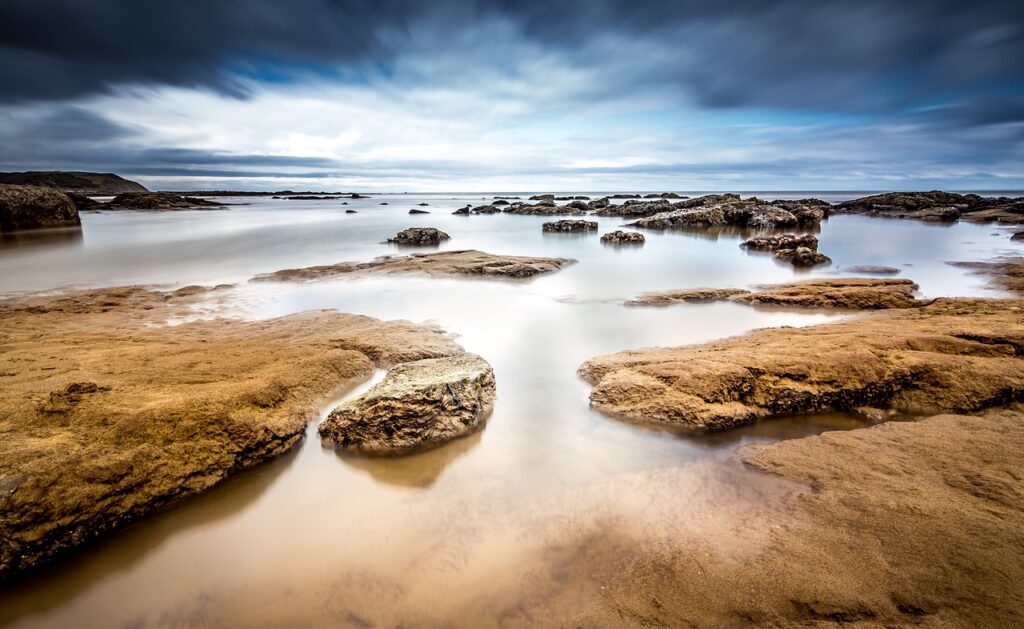If you’re planning a beach vacation in Mexico, it’s important to have a good understanding of tides and currents. Knowing how they work can help you enjoy your time in the water safely and make the most out of your beach experience. In this article, we will explore the various factors that affect tides and currents at Mexican beaches. From explaining the basic concepts to providing useful tips on how to navigate these natural phenomena, we’ve got you covered. So, grab your sunscreen and let’s dive into the fascinating world of tides and currents at Mexican beaches.

Understanding Tides and Currents at Mexican Beaches
Mexico is a country known for its beautiful coastal beaches, attracting tourists and beachgoers from all over the world. However, before venturing into the ocean, it is crucial to have an understanding of tides and currents to ensure a safe and enjoyable experience. In this comprehensive article, we will explore the various aspects of tides and currents at Mexican beaches, including their definition, factors affecting them, tidal range variation, tidal height and timing, types of currents, their characteristics, and safety tips. By gaining insight into these natural phenomena, you will be prepared to make informed decisions when exploring the coastal waters of Mexico.
Overview of Tides and Currents
Definition of Tide
Tides refer to the rising and falling of the ocean’s water level, influenced by the gravitational pull of celestial bodies, particularly the moon and the sun. Understanding tides is crucial for beachgoers as they can significantly affect the water’s depth and safety levels at different times throughout the day.
Definition of Current
Currents, on the other hand, are the continuous flows of water in the ocean, driven by various factors such as tides, wind, and temperature differences. These currents have the potential to carry swimmers or vessels away from the shore, making it important to be aware of their presence and characteristics.
Importance of Understanding Tides and Currents for Beachgoers
Understanding tides and currents is of utmost importance for beachgoers, both for safety reasons and enhanced enjoyment of beach activities. Knowledge of these natural phenomena allows individuals to plan their beach visits accordingly, considering factors such as tidal range, timing, and the presence of different types of currents.
Connection between Tides and Currents
Tides and currents are interconnected, with tides playing a significant role in the formation and movements of different types of currents. The gravitational pull of the moon and sun creates tidal bulges, which then generate various currents. By understanding this relationship, beachgoers can anticipate the presence of currents based on tidal patterns.
Factors Affecting Tides and Currents
Gravitational Pull of the Moon
The primary factor influencing tides and currents is the gravitational pull of the moon. As the moon exerts its gravitational force on the Earth’s oceans, it creates a tidal bulge on the side facing the moon, causing a high tide. Simultaneously, a second tidal bulge is formed on the opposite side of the Earth, generating a low tide.
Gravitational Pull of the Sun
Although the moon has a stronger gravitational effect on tides, the sun also contributes to their formation. During full and new moons, when the Earth, moon, and sun are aligned, the combined gravitational pull results in higher high tides, known as spring tides. Conversely, during first and last quarter moons, when the gravitational pulls of the moon and sun are perpendicular to each other, the resulting tides are lower, known as neap tides.
Shape and Depth of the Ocean Floor
The shape and depth of the ocean floor can significantly influence tides and currents. Narrow coastal configurations can amplify the effects of tides, creating areas with higher tidal ranges. Similarly, variations in the depth of the ocean floor can cause tidal focusing, where tides become more pronounced in certain regions.
Geographical Location
Geographical location plays a role in determining the tidal range and currents at Mexican beaches. Areas located closer to the equator generally experience smaller tidal ranges compared to regions situated closer to the poles. The specific positioning of the beach along the coast can also affect the presence and strength of currents.
Coastal Features
Coastal features such as headlands, bays, and estuaries can influence the formation and characteristics of tides and currents. Headlands can cause waves to refract, resulting in the development of longshore currents. Bays and estuaries, on the other hand, can experience amplified tidal ranges due to the convergence and constriction of water.
Local Wind Patterns
Wind patterns can have a significant impact on ocean currents. Strong onshore winds can drive the formation of longshore currents, while offshore winds can influence the presence of rip currents. Understanding the prevailing wind patterns in the area can help beachgoers anticipate the likelihood of encountering specific types of currents.
Seasonal Variations
Seasonal variations, including changes in temperature, wind patterns, and storm activity, can affect tides and currents. For instance, during hurricane season, the intensity and direction of currents may be altered, posing additional risks for beachgoers. Being aware of seasonal patterns can help individuals make informed decisions regarding beach activities.
Tidal Range Variation
Definition of Tidal Range
Tidal range refers to the vertical difference between the high and low tides during a tidal cycle. Understanding tidal range is crucial for beachgoers as it determines the extent to which the ocean water level fluctuates throughout the day.
Factors Affecting Tidal Range
Several factors can influence the tidal range at Mexican beaches. These factors include the alignment of the Earth, moon, and sun, the shape and depth of the ocean floor, coastal geography, and local wind patterns.
High vs. Low Tidal Range
Beaches experiencing high tidal ranges have significantly greater variations between high and low tides. This can result in extensive areas of exposed sandy beach during low tide, providing opportunities for beach exploration and activities. On the other hand, low tidal ranges have minimal fluctuations, resulting in relatively stable water levels throughout the day.
Example Locations with Varying Tidal Ranges in Mexico
Mexico is home to diverse coastal environments, offering a wide range of tidal patterns. Some areas, such as the Gulf of California and the Pacific coast, experience relatively high tidal ranges, providing ample opportunities for beach exploration and tidal pool discovery. Other regions, such as the Caribbean coast, have lower tidal ranges, attracting visitors with their calm and stable waters.

Tidal Height and Timing
Understanding Tidal Height
Tidal height refers to the vertical distance between the water level at any given time and a reference point, often referred to as a chart datum. The understanding of tidal height is crucial for beachgoers to ensure safety during specific activities such as boating, fishing, or beachcombing.
Tide Tables and Predictions
Tide tables provide valuable information regarding the predicted high and low tide times, as well as the corresponding tidal heights for a specific location. By consulting tide tables, beachgoers can plan their coastal activities accordingly, considering the water level at different times of the day.
Understanding Tidal Timing
Tidal timing refers to the predictability of when the tides occur. By becoming familiar with the tidal cycles, beachgoers can determine the best times to engage in various activities, such as swimming, snorkeling, or exploring tide pools. Additionally, understanding tidal timing is essential for individuals planning coastal excursions, ensuring they have enough time to safely return to shore before the tide changes.
Influence of Moon Phases on Tidal Height and Timing
Moon phases play a significant role in determining the tidal height and timing. During full and new moons, when the Earth, moon, and sun align, the gravitational pull is maximized, resulting in higher high tides. Conversely, during first and last quarter moons, the gravitational pulls of the moon and sun are perpendicular to each other, leading to lower tides.
Types of Currents
Definition of Currents
Currents can be defined as the continuous flow of water in the ocean, which can vary in speed and direction. Different types of currents can be found at Mexican beaches, each with its own characteristics and potential impact on beachgoers.
Importance of Understanding Different Types of Currents
Understanding the various types of currents is essential for beachgoers to ensure their safety and make informed decisions regarding their activities in the ocean. By recognizing the characteristics of each current, individuals can avoid potential risks and maximize their enjoyment of the beach environment.
Longshore Currents
Definition of Longshore Currents
Longshore currents, also known as littoral currents, are parallel currents that flow along the shoreline. They are a result of the oblique approach of waves to the shoreline, causing the waves to refract. Longshore currents can vary in intensity, speed, and direction, depending on factors such as wave height and beach slope.
Causes of Longshore Currents
Longshore currents are primarily caused by the approach of waves at an angle to the shoreline, leading to the refraction and subsequent parallel flow of water along the coast. These currents are affected by wave height, wave period, wave direction, and coastal slope.
Effects of Longshore Currents
Longshore currents can have both positive and negative effects. They contribute to the transportation of sediment along the shoreline, influencing beach erosion and accretion. Additionally, longshore currents can pose a risk to swimmers, especially when they encounter strong and fast currents. It is essential for beachgoers to be aware of the presence of longshore currents and take appropriate precautions.
Safety Tips While Dealing with Longshore Currents
To ensure safety when encountering longshore currents, it is recommended to swim or engage in water activities in areas where lifeguards are present. It is important to swim parallel to the shore if caught in a longshore current and avoid swimming against the current’s flow. Using flotation devices and maintaining constant communication with fellow swimmers can also enhance safety.
Rip Currents
Definition of Rip Currents
Rip currents, also known as rip tides or undertows, are powerful and narrow channels of water that flow away from the shore. They form as a result of water being pushed back from the beach by waves. Rip currents can be challenging to detect visually, making awareness and knowledge of their characteristics crucial for beachgoers’ safety.
Characteristics of Rip Currents
Rip currents are typically characterized by a strong current flowing seaward, often appearing as a darker or smoother area on the water surface. They can occur at any beach with breaking waves and are prevalent in areas where there are breaks in sandbars or other obstructions. Rip currents can reach speeds of up to eight feet per second, making them potentially dangerous to swimmers.
Identifying Rip Currents
Identifying rip currents can be challenging, as they can appear deceptively calm and may not be accompanied by large waves. However, some signs may indicate the presence of a rip current, such as a noticeable gap between breaking waves, a line of seaweed or foam moving seaward, or a difference in water color or texture.
Safety Tips When Caught in a Rip Current
If caught in a rip current, it is important to remain calm and avoid attempting to swim directly back to shore, as this can lead to exhaustion. Instead, swim parallel to the shore, allowing the current to carry you out of its influence. Once free from the current’s grip, swim diagonally towards the shore. If unable to reach the shore, signal for help and conserve energy by floating or treading water.
Upwelling and Downwelling
Definition of Upwelling and Downwelling
Upwelling and downwelling are vertical movements of water in the ocean, influencing the distribution of nutrients and impacting marine ecosystems. While upwelling brings nutrient-rich waters towards the surface, downwelling transports surface waters to greater depths.
Causes of Upwelling and Downwelling
Upwelling occurs when winds blow parallel to the coast, pushing surface waters away from the shore and allowing cold, nutrient-rich waters to rise from deeper layers. Downwelling, on the other hand, is often caused by offshore winds that push surface waters towards the shore, leading to the sinking of water towards deeper layers.
Effects of Upwelling and Downwelling
The vertical movements of water caused by upwelling and downwelling have significant impacts on marine ecosystems. Upwelling brings nutrients to the surface, supporting the growth of phytoplankton, which forms the basis of the ocean food chain. Downwelling, though less beneficial for nutrient availability, contributes to the transport of surface waters and the redistribution of heat.
Ecological Importance of Upwelling
Upwelling is of vital ecological importance, as it stimulates primary productivity in the ocean. The nutrient-rich waters brought to the surface through upwelling support the growth of phytoplankton, which serves as a food source for various marine organisms. This, in turn, attracts larger marine species, supporting diverse and thriving ecosystems.

Influence of Weather on Tides and Currents
Weather conditions, including wind patterns, storms, and climate change, can have a significant influence on tides and currents at Mexican beaches. Understanding these influences is essential for beachgoers to ensure their safety and make informed decisions while engaging in water activities.
Seasonal Patterns of Tides and Currents
Seasonal variations in weather patterns can affect the intensity and behavior of tides and currents. For example, during the summer months, prevailing winds can create stronger longshore currents, while the hurricane season may lead to altered tidal patterns and increased rip current risks. Being aware of the seasonal trends in tides and currents allows individuals to adapt their activities accordingly.
Effects of Climate Change on Tides and Currents
Climate change can have long-term effects on tides and currents. Rising sea levels due to global warming can result in higher overall water levels, which can impact the extent of tidal range and the potential for flooding. Changes in wind patterns and ocean currents due to climate change can also affect the presence and behavior of currents at beaches.
Understanding Seasonal Trends for Safe Beach Activities
To ensure safe beach activities, it is important to understand the seasonal trends in tides and currents. By considering factors such as wind patterns, past weather records, and potential storm systems, beachgoers can plan their outings and make informed decisions regarding swimming, boating, and other water activities.
In conclusion, understanding tides and currents is essential for anyone planning to visit Mexican beaches. By familiarizing yourself with the definition and factors affecting tides and currents, as well as the variations in tidal range, tidal height, and timing, you can ensure a safe and enjoyable beach experience. Being aware of different types of currents, such as longshore currents, rip currents, and the ecological significance of upwelling, allows you to recognize potential risks and take appropriate precautions. Furthermore, recognizing the influence of weather, climate change, and seasonal variations on tides and currents enables you to make informed decisions and adapt your beach activities accordingly. So, before you hit the sandy shores of Mexico, make sure to equip yourself with the knowledge necessary to navigate the tides and currents with confidence and enjoy all that these stunning beaches have to offer.
